We continue to talk about Street Art with this interview to the controversial Milanese street artist Mr Savehtewall, certain that it can be a starting point for an interesting discussion and that can be a piece for a constructive contribution to the theme of street art in Italy, so little addressed, so very persecuted but that, when needed, also becomes useful to the public reality!
Short bio Mr.Savethewall was born in Como in 1972. He defines himself a post-street artist whom uses the derivation and situationist détournement method to create works interpreting themes and issues of contemporary society. Mr.Savethewall does “deconstruction and reconstruction of linguistic codes” via the methods and techniques of Street Art. As his pseudonym declaims, Mr.Savethewall doesn’t paint on walls; he respects them by temporarily putting up his works with sticky tape. Among the main exhibitions we mention Teatro Sociale in Como (2013), Literature Festival in Ivrea (2014), Banca Fideuram in Varese (2014), Chiesa di San Pietro in Atrio in Como (2015), Mondadori Megastore of Piazza Duomo in Milano (2017). During Expo 2015 Oscar Farinetti commissioned him a triptych “L’Italia s’è desta” that has been exhibited at the entrance of Eataly Pavillion, curated by Vittorio Sgarbi. At the moment he works with Deodato Arte Gallery in Milan.
STREET ART IS DEAD MANIFESTO
“Street Art is born in the street and in the road it is expressed according to its reason for being. Today Street Art is mature and, if not dead, certainly different from its origins. The most authentic place for its enhancement is the street, the true open-air museum. Street Art without Street is ‘just’ Art. Entering museums changes the rules of the game, the new rules are those of the system (of the art, in fact)”.
Alessia Locatelli: Thanks for this interview.
First of all we would like to ask you if you’ve been to visit the Banksy exhibition and what you think about it.
Mr.Savethewall: Not yet. I’ve only seen his artworks on the street walls.
Alessia Locatelli: You have chosen the world of art after very different kind of experiences. How’s that?
Mr.Savethewall: An uncontrollable need. A so strong desire to let me pass from thought to action, apart from my work in a suit and tie.
Alessia Locatelli: Which are your subjects and themes?
Mr.Savethewall: A large magnifying glass on the drifts of contemporaneity in all its facets. From family to society, from politics to culture, from religion to business… The perfect family doesn’t exist. I wanted this message to get, with all the weight of its drama, to as many people as possible… and this was the beginning.
Alessia Locatelli: Do you think that the practice of the détournement let you enter the path traced by Banksy and before him, by the history of art? What different meanings do you attribute to your détournement compared to the Dada collages?
Mr.Savethewall: In my research I can find both influences. In some cases, especially for the iconography, I am influenced by the first one, while as regards to certain urban “operations” Dada movement inspired me looking for my way. Drawing inspiration from an artist or a movement is not having to reinvent the wheel every time. You use it but one day you start flying by on your own.
Alessia Locatelli: You have created a manifesto saying that the street art is dead. Could you explain to us the meaning of your statement? Can you help us to understand what the death of street art decrees?
Mr.Savethewall: Street Art is mature. It is very different today from its beginning. The Manifesto aims to put a firm line. It is the work of art that I would like to be the cultural reference in the history of art in order to define the watershed with something that has already been finished for some time. With the manifesto I basically say that it is not enough to paint on a wall to be a writer. You can only be an artist. If you work on commission, if you pay for your work, if you sell through a gallery, if you think that illegality and anonymity are unnecessary and anachronistic……. you’re different. However, there are still integralist, pure, irreducible Writers. They have my esteem, even if they are beyond the time limit for the history of art. I could paint like an Impressionist too but it will not have the same impact.
Alessia Locatelli: You are called Mr “savethewall” and your works of art are posted in legal spaces and are not directly created on the wall. Do you deny the wall as a “classic” support of street art?
Mr.Savethewall: I do not deny the wall, I reject the illegality of a permanent, unauthorized work of art on a wall. But I’m a post street artist and for me illegality is useless. Above all, I do not deny the road, although today the post Street artists use mass media as a new way to create.
Alessia Locatelli: This definition opens to the concept of dialogue with legality and therefore with the institution. Is there anything you would like the City of Milan to change in the near future?
Mr.Savethewall: A line of communication with the city of Milan is open, like with many other virtuous cities that in Italy are able to enhance the mural art through recoveries of disused areas. I think that it ‘s a first big step to inform about what writing, Street Art, post Street Art and mere vandalism are. The rest comes from itself because at that point the interlocutors and the objectives will be clear (necessary basis for every project).
Alessia Locatelli: Does posting bills in legal spaces mean that you paid the billposting fee to the municipal office?
Mr.Savethewall: One thing is a billboard, another thing is to take a piece of cardboard from the street, decorate it with a social message and put it back where it was found. An advertising billboard has rules. The act of using a piece of non-permanent adhesive tape as an alternative to a graffiti (even if beautiful.. but the beauty is subjective) is a jump of one order of magnitude that convinces every public administration not to question. I have been an example of what a Polite Writer can be.
Alessia Locatelli: You define yourself as a post Street artist and you support the value of this statement through some parameters including the interest in the sale of your works of art, the management of these by a seller or a gallerist or the search for structured visibility. And what do you think about being consecrated in a museum?
Mr.Savethewall: I think that it would be rewarding and it would be hypocritical to support the contrary.
Alessia Locatelli: So does everybody end up being post street artists if they want to make art for living?
Mr.Savethewall: The question for a Writer does not even arise. The “writer” represents the pure, the faceless fundamentalist who believes in the “street way of life” to the point of making it a philosophy of life. This is why I say that it does not arise even the question and never will arise because of this irreducible belief, without price. He hates those whom sell themselves on the art market. They are people who will never “betray” their vocation by virtue of a compensation, an agreement with the authority (whatever form it takes, from the art system to the public administration, to the private). The street artist, on the other hand, while leaving with an authentic push, let himself being fascinated by the possibility of success, of earning (even many times at the expense of anonymity) and on the contrary acting openly becomes something more satisfying than continuing to act in the underground. I do not know if I was able to explain why I used the expression “writer”, especially in Italy there is a certain distrust of street artists too, but I’m sure of it (not because I was particularly good but because you know what I’m talking about).
Alessia Locatelli: Did the Manifesto create problems with the Italian Street artists? There’s something you’d like to tell them, in order to propose a debate on the theme of Italian street art through these online pages?
Mr.Savethewall: I think we are good at last. I received threats and insults for my choice 5 years ago when I have declared to be Mr. Savethewall and to make of my art my work. I tried to explain ineffectively that time what I am sure today will pass more clearly with this manifesto. The post Street artist comes later and sells, he’s not anonymous, he’s not illegal… etc. What I want to say to them is just this.
Alessia Locatelli: How much do you think it is necessary today that art speaks to the contemporary, even through the urban space?
Mr.Savethewall: It is not necessary but it must be possible. This already happens and it is often very pleasant: I think of how many blind walls in the world today are no longer unwatchable, how many degraded spaces have been retrained thanks to this dialogue institution- (street) artist and thus between urban space-public art.
Alessia Locatelli: How do you see the future of street art, now that it has been incorporated by the market, raising prices of his best authors at the level of the great names in the history of art and confusing a lot the quality of the message of the artists that it proposes?
Mr.Savethewall: I do not know if it’s true that it let prices of its best prices authors raise. Anyway, future is good for the artists who will know how to anticipate it and for whom, before the others, will be able to show it to other artists. This at least from my point of view.
Alessia Locatelli: What project are you preparing?
Mr.Savethewall: It is a double project, consistent with my research and also with this manifesto and I hope to be able to talk about it when it will be structured in the right way.
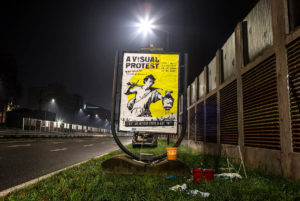
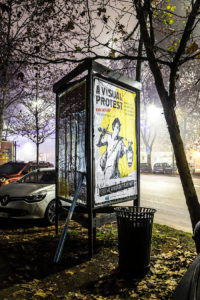
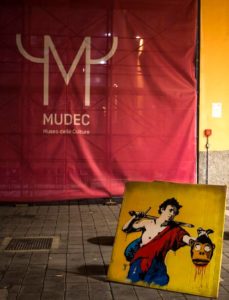
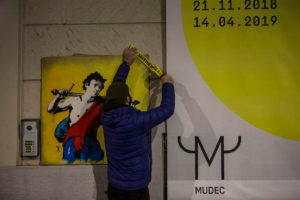
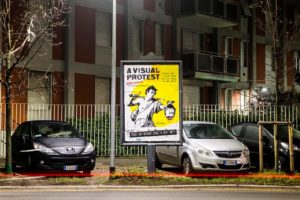
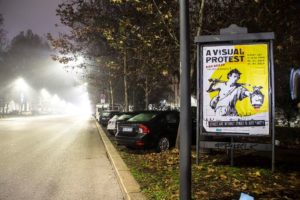
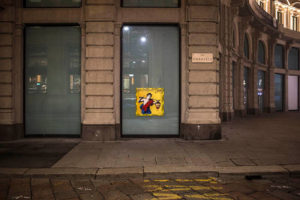

Alessia Locatelli was born in Milan in 1977. She collaborated with Denis Curti in the design of past editions of SiFest and the Canon Award, specializing in photography and becoming Indipendent Curator in organizing exhibitions with both public and private realities in Italy and abroad, while in parallel the curating and consulting activity continues for artists and photographers. She signs texts in some art magazines and in the Dossier Photography (third edition) within the “CAM, catalog of modern art” published by Editoriale Giorgio Mondadori-Cairo Group. Since 2016 she organizes and teaches professional courses to become Photocurator in some schools of photography (IIF, IED) and in other independent realities. She participates as Folio Reviewer in various Italian Photo Festivals (SiFest in Savignano, Photolux in Lucca, Fotografia Europea in Reggio Emilia). She is in charge of helping and assisting the authors in the selection of Fine Art cards and in the assembly materials useful for the conservation and sale to collectors. She collaborates in Italy with the German paper mill Hahnemühle. She is artistic director of the Enrico Cattaneo archive.


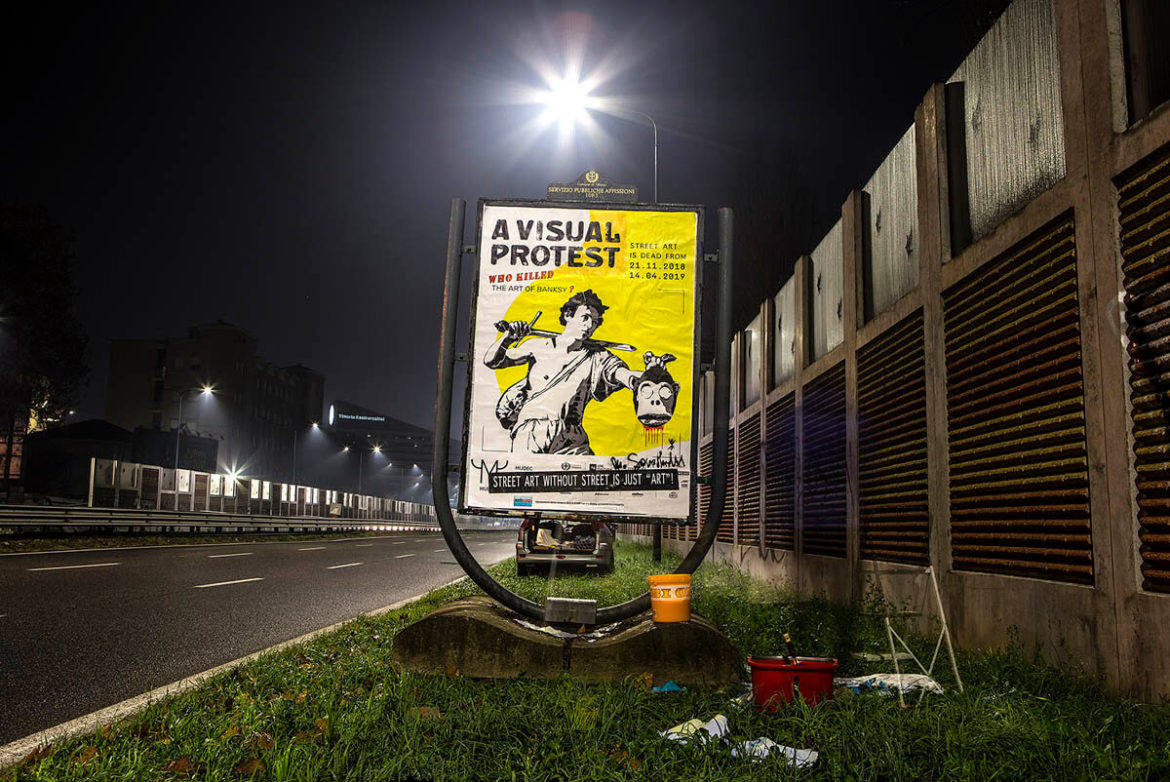




NO COMMENT